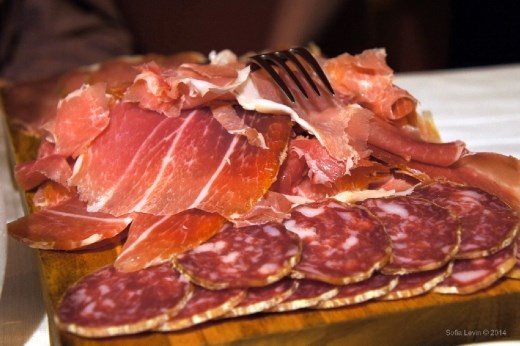
Andy Warhol once said, “An artist is somebody who produces things that people don’t need to have”. Take for example the multi-coloured Barolo Chapel in La Morra, painted by pop artists Sol LeWitt on the outside (US) and David Tremlett on the inside (UK): no one really needs it, but it certainly stands out against the blue green hills of Langa. Another contrast is just a stone’s throw away – a crumbling building much in need of some TLC. You see a quite a few of these in the region, some in the process of being restored, others waiting patiently to be liveable again, little pieces of history dispersed around hills and valleys. Around the corner from the chapel, a different scene awaited us: the stunning Palas Cerequio hotel and restaurant.

Let me pause for a moment to admit to what is perhaps my greatest weakness: cheese. You know that deep ache you get when you experience love at first sight, or the flutter in your chest when you spy someone you fancy across the room? Cheese arouses a similar physiological response in me. Call it over the top if you will, but when it comes to cheese, I have zero self-control. In this case I was given a pardon – exercising self-control at a cheese tasting overlooking Michele Chiarlo winery at Palas Cerequio was forbidden as far as I was concerned.
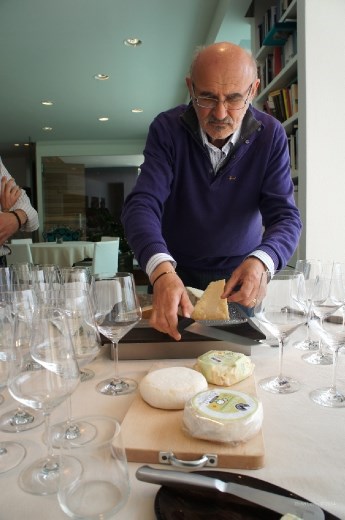
There are nine DOP accredited cheeses from Piemonte, and with a little guidance from two ONAF experts (The National Association of Cheese Tasters), we worked our way through seven of them. I was thrilled to learn that women are generally better tasters than men; our senses are more discerning. I could barely control my heart rate. Putting that much cheese in front of me is like giving a free hit to a recovering addict. I asked Pietro if he had any weaknesses as debilitating as my cheesy Achilles' heel, and he answered on behalf of all Italians: “Food, wine and women… probably in that order.” “How about at the same time?” I asked. “Perfetto”.
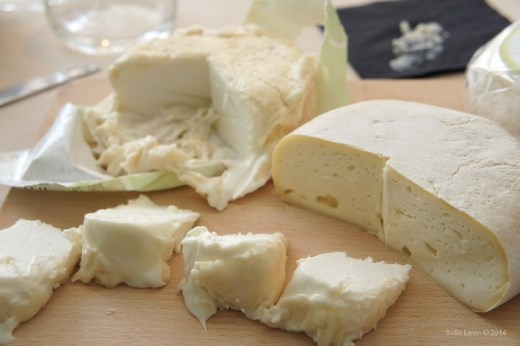
We started with the lighter cheeses: Roccaverano, an oozy goat’s cheese matched with Cortese di Gavi white wine; Murazzano sheep’s cheese with a dash of cow’s milk aerated with tiny holes that we broke apart like bread in our hands, and paired with a young Cipressi Barbera d'Asti; and Raschera cow’s cheese aged two and a half months with La Courte Barbera d’Asti, fragrant with red berries. We moved on to more familiar varieties that far surpassed anything I’ve sampled at home: a crumbly and nutty Castelmagno from high up in the mountains and aged in a cellar, married with Barbaresco Asili that smelled like strawberry jam (“if Barbaresco is queen of the wine, Castelmagno is king of the cheese”); and Grana Padano, a granular cow’s milk cheese packed with tiny crystals that make you salivate, washed down with Barolo Cerequio, a red wine perfumed with rose petals and blackberries. The final two cheeses were sharp and spicy: Bra Duro, a golden cheese coated in a white grain and aged five years, paired with Cannubi Barolo, and one of my favourites, Gorgonzola, covered in blue-green mould balanced by some local Grappa. “In this land, we know how to enjoy life,” explained one of the cheese experts. With a title that translated to something along the lines of ‘cheese expert’, I wasn’t about to argue.
It was in this setting that I learned the expression “da morire”, to die for. It wasn’t just the boulders of cheese spread before me, or the hotel in the abandoned hamlet of Cerequio – the name given to the most recognised Cru of Barolo – it was the lifestyle. Nobody eats alone here. Sharing is second nature. I felt intoxicated in that moment, not from wine or cheese, but from this place.
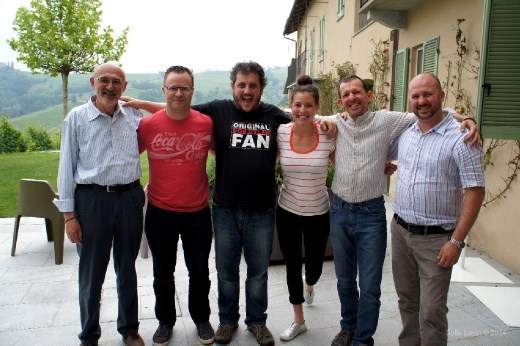
I prefer cheese to snails. The same can’t be said for Giovanni Avagnina from the International Institute of Elicicoltura, ‘snail growing’. If everyone was as passionate about a single thing to the same degree Giovanni is passionate about snails, the world would be a better place. We visited him in Cherasco, where snail paraphernalia covered every surface. A decorative snail cake in a glass display, snail sketches, snail statues, snail paintings – you name it, he had it. Giovanni, a somewhat eccentric chap with white hair that contrasted against his pink shirt and purple jumper, has authored a book on snails that’s been translated into four languages. Each year, people from 30 countries around the world use his program and produce a total of 2000 tonnes of snails for the best restaurants and products. Any snail products one buys should have the certified snail stamp to guarantee quality, like the dolphin-safe symbol on tuna cans in Australia. We briefly visited his snail farm where we learned that every square meter of land produces approximately one kilogram of snails. A kilogram sells for between four to eight Euros, so a lot land is needed to earn a living as a snail farmer.
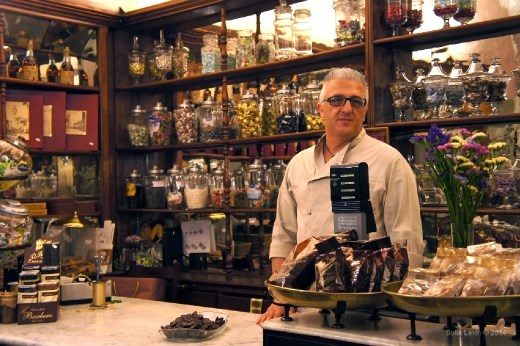
Our food tour took another sharp turn and we landed, pleasantly, in chocolate. We paid a visit to nearby Pasticceria Barbero, a historical pastry store established in 1881. Owner Giancarlo Torta (yes, ‘torta’ translates to cake) humoured us with pralines, chocolate covered coffee beans, truffles and liqueur. The shop has the charming feel of a bygone era: vintage scales, marble bench tops, wooden shelving and stands of glass jars filled with colourfully wrapped delights. But my ‘kid in a candy store’ moment came later, when we swung by Giancarlo’s factory and I tried my hand at making Baci di Cherasco (Cherasco Kisses). It’s relatively simple: crush toasted hazelnuts with a rolling pin to ensure chunks of different sizes, hold a tray under your industrial chocolate fountain machine, liberally sprinkle hazelnuts into the melted dark chocolate, mix together, and then flick ten cent piece-sized blobs onto a tray to dry. I gave it a shot, and realised it was more difficult than it looked. My lack of finesse made Giancarlo laugh, “she gives big kisses!” he said, but I was busy sticking my finger into the stream of melted chocolate.

I never expected to eat cheese for breakfast, followed by snails, chocolate and finally raw veal sausage, but that’s exactly what happened. The latter happened in Bra, spelled and pronounced in the exact way that will make those of you lacking maturity giggle (myself included). The father and son team in charge at tiny local butcher, Macelleria Aprato, crammed myself, Pietro, Carl and all of his camera gear into their even tinier kitchen. The lesson of the day was Salsiccia di Bra, a sausage with a history that dates back to when an old king gave Jewish people equal rights, and they were able to make and sell the veal sausage (although today they usually add some bacon for flavour). Today, there are only about 12 manufacturers that are allowed to call their sausage Salsiccia di Bra. The veal is minced twice, and then a third time with the bacon, before being mixed with water and a secret spice cocktail known only to the people that produce it (kind of like Coca-Cola). It’s then injected into animal intestines to keep its shape. Political correctness aside, the process looks exactly like stuffing meat into a flimsy condom. After an embarrassing bursting incident, I eventually got the hang of it. The sausage is best eaten raw and because it was so fresh, it was juicier and more fragrant than the version I sampled at dinner that evening.
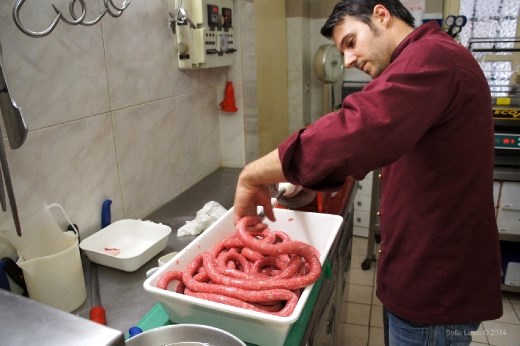
Before dinner we stopped in at the University for Gastronomical Sciences in Pollenzo, where we chatted with the Director Piercarlo Grimaldi, about the course that attracts students from all over the world. The grounds are impressive to say the least, conjuring imagery of Harry Potter and Quidditch. A long dining table with branded crockery and wine glasses was set for the students. Naturally, Carl suggested I take off my shoes and walk barefooted down the middle for the camera. Footage to come, pun intended.
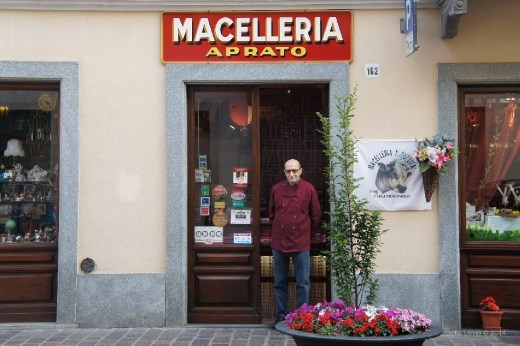
We ate that evening at Ascheri Winery in Bra, where owner Matteo Ascheri showed us around the grounds. The cellars were impeccably designed by the same architect behind Le Case della Saracca in Monforte. Black tiling, bold wooden finishes and polished concrete surround neatly stacked bottles, all strategically lit to combine practicality and design. The elegance continued upstairs in the four-star, boutique hotel. The 27 rooms are industrial chic, each decorated in earthy tones and a little bit different to the next. The portholes in the walls that direct the eye to various historical sites are a nice touch, as is the complimentary bottle of wine. Despite the cheese, chocolate and sausage, we had worked up an appetite. Dinner was on-site at Osteria Murivecchi, a cosy and warm osteria with a Piemontese menu scribbled on a blackboard.
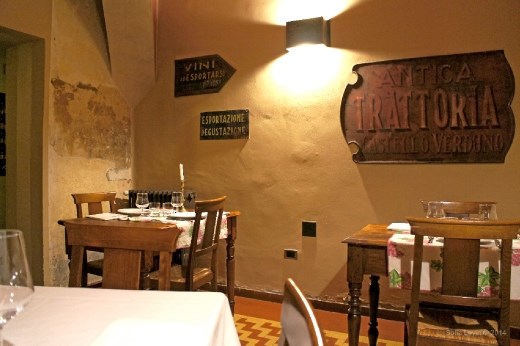
It started, as meals often do, with an oversized plate of cured meat, including the Salsiccia di Bra like I had made earlier. My favourite, carne cruda, made an appearance, and by the time we worked our way through the platter (there’s no such thing as wasting food here), I was stuffed. That didn’t stop me from finishing my home-made gnocchi, dense potato pillows in tomato and basil, or from enjoying beautifully grilled sole, my first and final encounter with fish (and salad) during my time in Piedmont. Somehow being too full for dessert meant finishing with cheese and grappa, but I insisted that I had consumed enough cheese for one day. All right, you caught me; maybe I had just a little bite.
